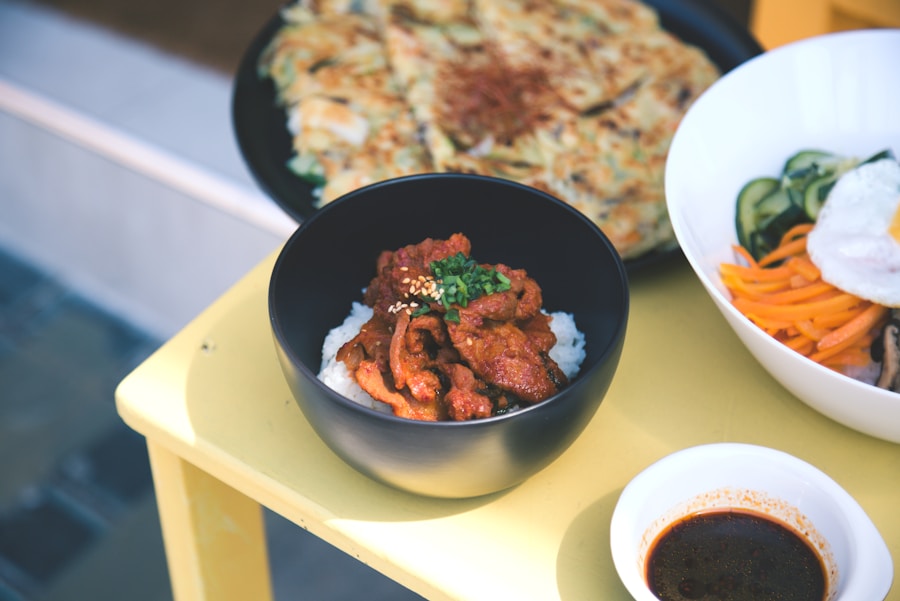The rise of Vietnamese rice as a global staple is marked by its high-quality varieties, efficient cultivation methods, and increasing export volumes, solidifying Vietnam’s position as one of the world’s leading rice producers.
Navigating the Challenges and Opportunities of Vietnam’s Booming Rice Industry
Vietnam’s rice industry is a vital component of the country’s culture and economy. Rice has been a staple food in Vietnam for centuries, and the country is one of the largest rice producers and exporters in the world.
The industry plays a significant role in providing employment and income for millions of farmers and contributes to Vietnam’s food security. Rice is not only a source of sustenance but also a symbol of prosperity and abundance in Vietnamese culture.
Vietnam’s Global Position
- Major Player: Vietnam is consistently one of the world’s top rice exporters, typically ranking among the top 3 behind India and Thailand.
- 2023 Export Success: In 2023, Vietnam exported over 7 million tonnes of rice, generating revenue of approximately $3.5 billion USD.
Key Export Destinations
- Philippines: The largest buyer of Vietnamese rice, accounting for almost 50% of total rice export volume.
- China: A significantly growing market, particularly for high-quality rice varieties.
- Africa: Several African nations, including Ivory Coast and Senegal, are important markets for Vietnamese rice.
- Malaysia, Cuba, and Bangladesh: Other notable importers of Vietnamese rice.
Types of Rice Exported
- White Rice: The most common type exported, with different grades catering to various markets.
- Fragrant Rice: Premium varieties prized for their aroma and taste, fetching higher prices.
- Jasmine Rice: A long-grain fragrant rice popular in Southeast Asia and Middle Eastern markets.
- Specialty Rice: Includes organic rice and niche varieties gaining traction.
Trends Shaping Exports
- Quality Focus: Vietnam is shifting its focus from simply quantity to high-quality rice production to meet rising global demands.
- Sustainable Practices: Growing emphasis on sustainable and environmentally friendly rice cultivation to appeal to conscious consumers.
- Branding: Developing a strong brand image for Vietnamese rice in international markets is a key strategy for increasing value.
- Trade Agreements: Agreements like the EVFTA with the European Union help expand market access and reduce barriers for Vietnamese rice.
Challenges
- Competition: Vietnam faces strong competition from other rice-exporting giants like India and Thailand.
- Climate Change Impact: Droughts and extreme weather events can affect rice production and export volumes.
- Price Fluctuations: Global rice prices can fluctuate, impacting earnings for Vietnamese exporters.
The Growth of Vietnam’s Rice Industry
The growth of Vietnam’s rice industry can be traced back to its long history of rice cultivation. Rice production in Vietnam dates back over 4,000 years, with evidence of early rice cultivation found in archaeological sites. Over the centuries, rice farming techniques and technologies have evolved, leading to increased productivity and efficiency.
Currently, Vietnam is the world’s third-largest rice exporter, after India and Thailand. The country produces an average of 44 million tons of rice annually, with the Mekong Delta region being the main rice-growing area. The growth of the industry has been driven by favorable climatic conditions, government support, and advancements in technology.
The Challenges Faced by Vietnam’s Rice Industry
Despite its success, Vietnam’s rice industry faces several challenges that threaten its sustainability and growth. One of the main challenges is competition from other rice-producing countries. Countries like India, Thailand, and Cambodia also have significant rice production capacities and compete with Vietnam in the global market.
Climate change and natural disasters pose another major challenge to Vietnam’s rice industry. Rising temperatures, changing rainfall patterns, and increased frequency of extreme weather events such as floods and droughts have a significant impact on rice production. These climate-related challenges require adaptation strategies to ensure the resilience of the industry.
Pests and diseases also pose a threat to Vietnam’s rice industry. In recent years, outbreaks of pests such as brown planthoppers and diseases like rice blast have caused significant damage to rice crops. These pests and diseases can reduce yields and increase production costs for farmers.
Additionally, the lack of infrastructure and technology in some rural areas hinders the productivity and efficiency of rice farming. Limited access to irrigation systems, storage facilities, and modern farming equipment can limit the potential of the industry.
Climate Change and its Impact on Rice Production
Climate change has a significant impact on rice production in Vietnam. Rising temperatures and changing rainfall patterns affect the growth and development of rice plants. Higher temperatures can lead to reduced grain quality and lower yields. Changes in rainfall patterns can result in droughts or floods, both of which can be detrimental to rice crops.
To adapt to the challenges posed by climate change, farmers and researchers in Vietnam are implementing various strategies. These include the development of climate-resilient rice varieties, improved water management techniques, and the use of organic fertilizers. Additionally, the government is investing in research and development to find innovative solutions to mitigate the impact of climate change on rice production.
The Role of Technology in Vietnam’s Rice Industry
Technology plays a crucial role in increasing productivity and efficiency in Vietnam’s rice industry. Advancements in farming techniques, machinery, and digital tools have revolutionized rice farming practices.
One example of technological advancement is the use of precision agriculture techniques. Farmers can now use satellite imagery, drones, and sensors to monitor crop health, optimize fertilizer application, and detect pest infestations early. This allows for more targeted interventions and reduces the use of chemicals, making rice farming more sustainable.
Furthermore, mechanization has improved labor efficiency in rice farming. Modern machinery such as combine harvesters and transplanters reduce the need for manual labor, saving time and reducing costs for farmers.
Government Support for Vietnam’s Rice Industry
The Vietnamese government recognizes the importance of the rice industry and has implemented various policies and programs to support rice farmers. These initiatives aim to improve productivity, enhance the quality of rice, and increase the competitiveness of Vietnamese rice in the global market.
The government has invested in infrastructure development, including irrigation systems, roads, and storage facilities. This improves access to water for irrigation, facilitates transportation of rice from farms to markets, and ensures proper storage to prevent post-harvest losses.
Additionally, the government provides financial support to farmers through subsidies and credit programs. These programs help farmers access capital for purchasing inputs, investing in machinery, and adopting new technologies.
Research and development are also a priority for the government. Investments in agricultural research institutions and collaborations with international organizations aim to develop new rice varieties, improve farming techniques, and address challenges such as pests and diseases.
The Importance of Sustainable Agriculture in Rice Production
Sustainable agriculture practices are crucial for the long-term viability of Vietnam’s rice industry. Sustainable agriculture focuses on minimizing environmental impact while maximizing productivity and profitability.
One of the key benefits of sustainable agriculture practices is the preservation of soil health. Practices such as crop rotation, cover cropping, and organic fertilization help maintain soil fertility and reduce the need for chemical inputs. This not only improves long-term productivity but also reduces the risk of soil degradation.
Sustainable agriculture also promotes biodiversity and natural pest control. By creating habitats for beneficial insects and birds, farmers can reduce reliance on chemical pesticides. This approach not only protects the environment but also reduces production costs for farmers.
In Vietnam, there are several examples of sustainable agriculture practices being implemented in the rice industry. For instance, the System of Rice Intensification (SRI) promotes practices such as transplanting young seedlings, using organic fertilizers, and managing water efficiently. SRI has been shown to increase yields while reducing water usage and chemical inputs.
Opportunities for Rice Export in Vietnam
Vietnam has a significant potential for growth in rice exports. The country is already one of the largest rice exporters in the world, but there are still opportunities to expand market share and increase export volumes.
Vietnamese rice is known for its high quality and competitive prices. This makes it attractive to importers in countries such as China, the Philippines, and Indonesia, which have large populations and high demand for rice.
Furthermore, the growing global population and increasing demand for rice as a staple food present opportunities for Vietnam to expand its export market. As long as Vietnam can maintain its competitiveness in terms of quality and price, there is potential for further growth in rice exports.
The Role of Rice in Vietnam’s Economy
Rice plays a significant role in Vietnam’s economy. It is not only a source of income for millions of farmers but also contributes to the country’s GDP and food security.
Rice production accounts for a significant portion of Vietnam’s agricultural output. It contributes around 15% to the country’s GDP and employs over 50% of the rural workforce. The income generated from rice farming supports rural livelihoods and helps reduce poverty in rural areas.
Moreover, rice is a crucial component of food security in Vietnam. As a staple food, it provides a stable source of nutrition for the population. Ensuring sufficient rice production is essential to meet domestic demand and prevent food shortages.
The Future of Vietnam’s Rice Industry
The future of Vietnam’s rice industry holds both challenges and opportunities. While competition from other rice-producing countries and climate change pose significant challenges, there are also opportunities for growth and development.
To navigate these challenges, it is crucial for Vietnam’s rice industry to continue investing in research and development. Developing climate-resilient rice varieties, improving farming techniques, and adopting sustainable agriculture practices will be key to ensuring the industry’s long-term sustainability.
Furthermore, leveraging technology and innovation will be essential for increasing productivity and efficiency. Continued investment in infrastructure, such as irrigation systems and storage facilities, will also be necessary to support the growth of the industry.
Navigating the Challenges and Opportunities of Vietnam’s Booming Rice Industry
Vietnam’s rice industry has come a long way, but it still faces challenges that need to be addressed. Competition from other rice-producing countries, climate change, pests and diseases, and lack of infrastructure and technology are all obstacles that must be overcome.
However, with the right strategies and investments, Vietnam’s rice industry has the potential for further growth and development. Adapting to climate change, embracing technology, implementing sustainable agriculture practices, and leveraging government support will be crucial for navigating the challenges and seizing the opportunities that lie ahead.
By addressing these challenges and capitalizing on opportunities, Vietnam’s rice industry can continue to thrive and contribute to the country’s economy and food security.
Originally posted 2024-03-28 10:01:06.




